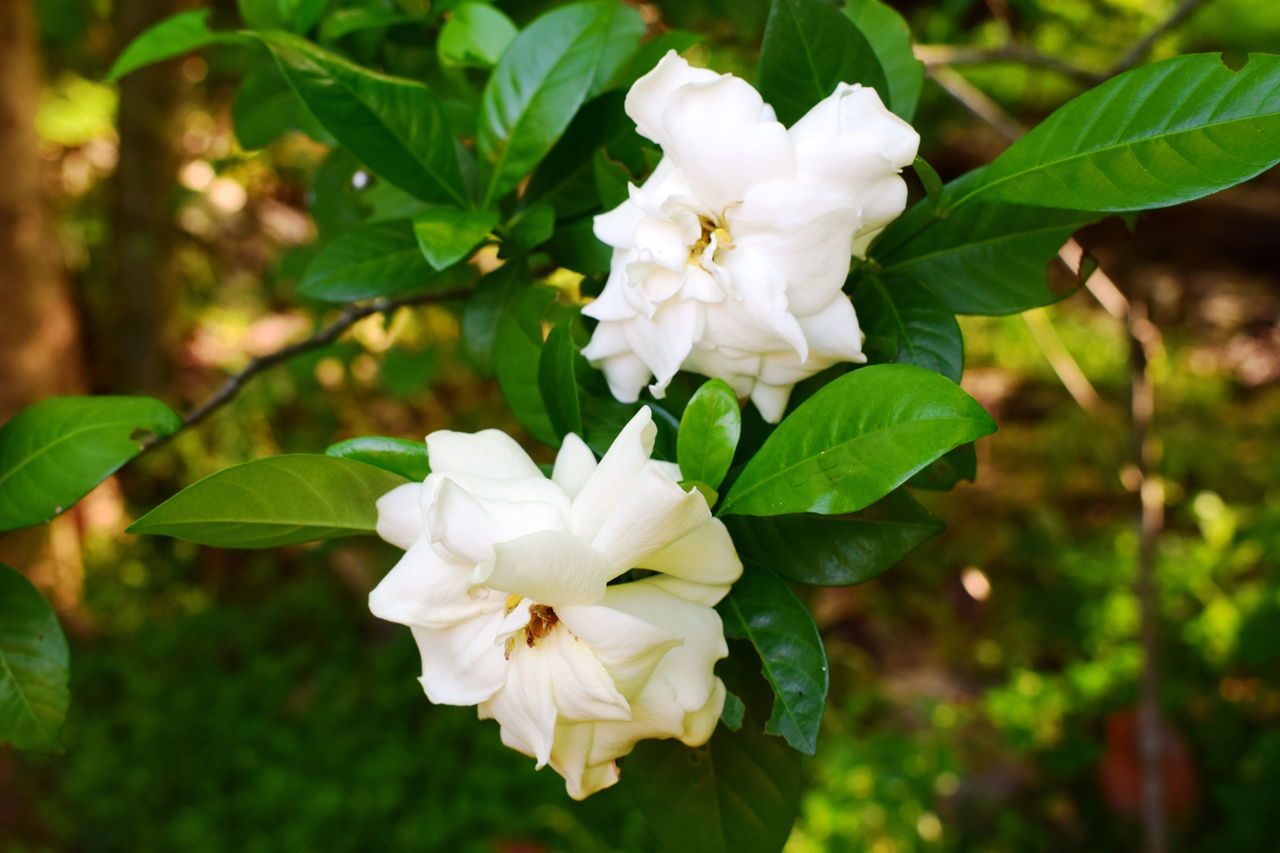Gardenias are extremely popular shrubs, known for their incredibly fragrant, beautiful white flowers However, without proper care, these shrubs can easily become overgrown and leggy. Pruning is an essential task to keep your gardenia healthy, encourage blooming, and maintain a shapely form. In this article, we’ll walk through when, how, and why to prune your gardenia to maximize its flowering potential.
When to Prune Gardenias
Timing is crucial when pruning gardenias. You’ll want to prune them at the right time of year to avoid accidentally removing flower buds. Here are the optimal times:
- Spring – Prune in early spring before the plant leafs out. This allows you to shape the shrub before growth starts.
- After Flowering – The best time to prune is right after flowering ends. This way, you avoid cutting off next year’s flower buds.
Avoid pruning gardenias in the fall, That’s when they are setting buds for the following spring’s blooms
How to Prune Gardenias
Pruning gardenias doesn’t require any special tools. Follow these steps for proper pruning:
- Gather a pair of bypass hand pruners and loppers for thicker branches. Clean and sterilize the blades first to prevent disease transmission.
- Examine the shrub and identify branches that are dead, damaged, or crossing/rubbing together. These should be removed.
- Cut back upright shoots and any branches growing toward the center of the shrub to encourage outward growth.
- Shorten lanky branches to reshape the plant. Make cuts just above leaf nodes or buds.
- Thin out congested areas to improve air circulation and light penetration.
- Remove about 1/3 of the oldest branches all the way down to the main trunk. This rejuvenates the plant.
- Shape the shrub by trimming branches close to the desired size and silhouette. Gardenias look best with a rounded shape.
- Make all cuts at a 45 degree angle just above buds or leaf nodes. Avoid leaving stubs.
Why Prune Gardenias
Pruning provides several important benefits for gardenias:
- Encourages Bloom Growth – Removing spent flowers prompts the plant to produce more blooms.
- Improves Air Circulation – Thinning congested branches allows for better airflow, which reduces foliar diseases.
- Lets in More Light – Opening up the center of the shrub helps sunlight penetrate to lower branches.
- Rejuvenates Old Shrubs – Cutting back older branches stimulates new, vigorous growth.
- Maintains Shape and Size – Trimming controls unwieldy growth and keeps gardenias neat and tidy.
- Removes Damaged Areas – Pruning out dead or diseased branches improves the shrub’s health.
Pruning Tips
Follow these tips for success when pruning your gardenia:
- Prune gardenias planted in containers more often than in-ground shrubs. Their growth is more compacted.
- Disinfect your pruners between plants to prevent disease spread. Use a diluted bleach solution.
- Prune lightly and gradually rather than dramatic, heavy pruning. No more than 1/3 of branches.
- Always make pruning cuts just above leaf nodes or buds to direct growth. Cut at a 45 degree angle.
- Remove all clippings and debris from around the shrub after pruning to prevent fungal issues.
- Feed gardenias with a fertilizer for acid-loving plants after pruning to encourage new growth.
Proper pruning is vital for keeping your gardenias flowering abundantly year after year. By following these when, how, and why guidelines, you can easily prune your shrubs like a pro!
StepsPart
- When you graft a gardenia to a tree trunk, the underside of the leaves and the trunk of the tree get sticky white stuff on them. What could it be? Best Answer: Mealybugs leave behind the sticky white powder. Mealybugs are small bugs that eat sap and develop waxy filaments as they get older. They usually eat in groups on soft branches, stalks, and the undersides of leaves. While they’re there, they shed their body filaments on the plant tissue and release honeydew, a sticky, sweet substance.
- It looks like half of my gardenia is dead and the other half is a dull green color. What can I do? Myra Preston Community Answer: If your gardenia is wilting or dying, it’s probably because of a pest or disease. Your plant can be saved by lowering the humidity and cutting it back. This will help the air flow and stop the spread of disease at the same time. Using an insecticide and fertilizing your plant can also help.
- Question: My gardenia in a pot outside almost died over the winter. A few green leaves are close to the plant’s base. How much should I cut it back? If this happens, cut the branches back about two inches (5 cm). ) below the damage with sharp pruning shears. If possible, wait until after it blooms.
Things You Should Know
- With pruning shears, cut off half of the oldest branches that are close to the trunk. New growth will be able to start when the oldest and thickest branches are cut off.
- To get more plants to grow, cut the remaining branches to the height and shape you want by making cuts above a stem branch or leaf node.
- During the flowering season, pinch off the brown or black blooms at the seed base to get rid of dead stems.
Guide to Pruning a Gardenia Bush : Garden Savvy
FAQ
When should gardenia bushes be pruned?
How do you prune an overgrown gardenia?
Can you cut gardenias all the way back?
- The Ultimate Guide to Growing Strawberries in Raised Beds - August 8, 2025
- No-Dig Garden Beds: The Easiest Way to Grow a Beautiful Garden - August 6, 2025
- How to Protect and Preserve Wood for Raised Garden Beds - August 6, 2025

